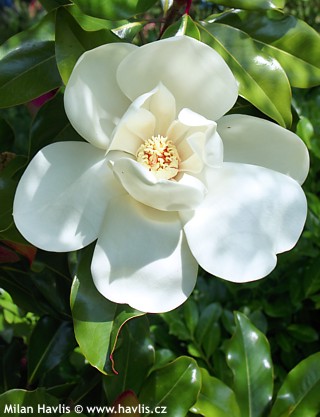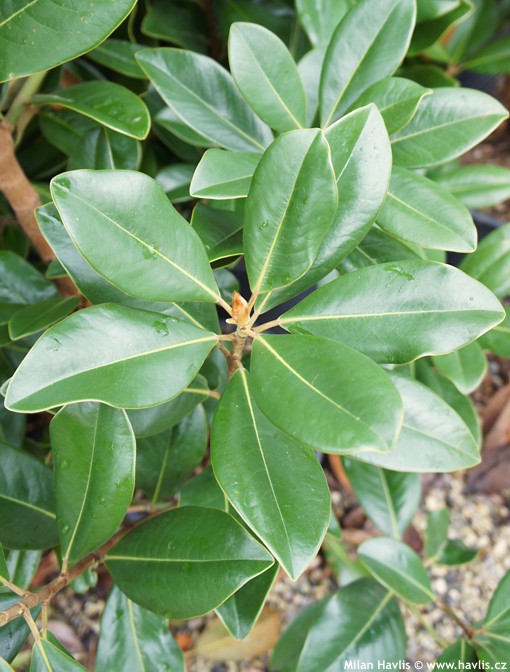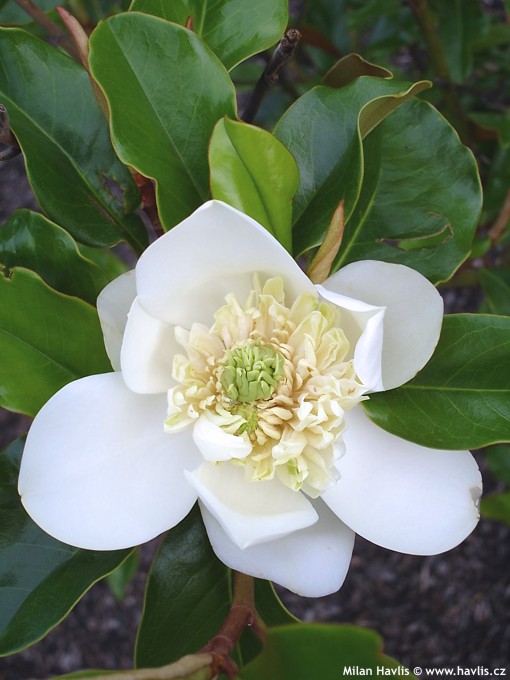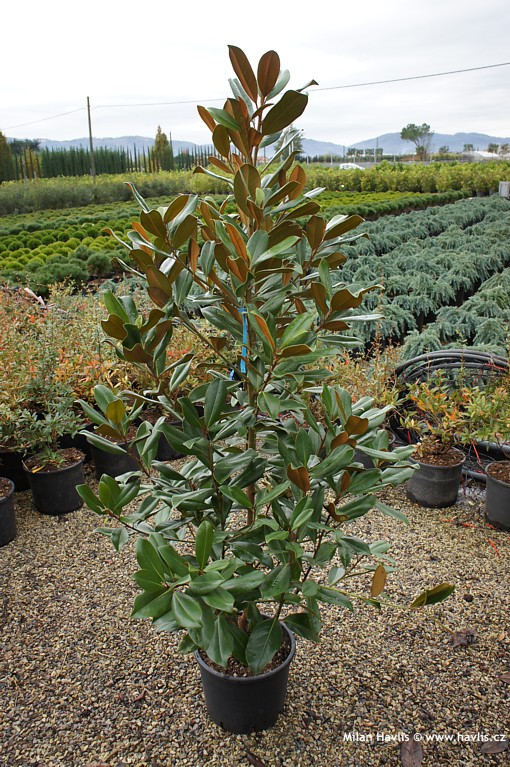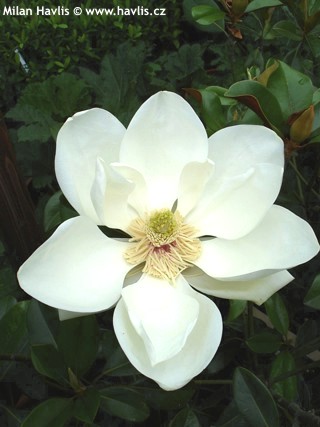Magnolia grandiflora (Flore Pleno) 'NANNETENSIS'® southern magnolia, bull bay


Nannetensis? is an accepted name for this bull bay magnolia that was formerly cultivated under various names combining words Flore Pleno (double flowers) and Nantes which is its city of origin. This beauty is a prolific bloomer, just like Goliath variety, making flowers from late spring until early autumn. They are large, about 24-26 cm across, creamy white, sweetly scented and open up one by one. Nannetensis? magnolia is a stubborn lady as it often happens that one plant produces not only double flowers (with two sets of petals), but also fully double flowers with many dwarf petals inside the flower, as well as a few single flowers every now and then.
The leaves are evergreen, medium to dark green, tough and leathery, with undersides covered with rusty brown indumentum. It grows fast, making 30-40 cm per year. Pruning is not commonly recommended, still, if you have a small garden and need to keep this beauty smaller, shorten last year’s long shoots by a third or maximum a half if the tip of the branch does not have a flower bud (fat and short as opposed to a leaf bud that is slim and long). Do so after all frost in early spring. If the branch has a flower bud, cut it after the flower has faded. We strongly recommend regular fertilizing. To save time and worry here is a way to feed your magnolia only once a year: take a quality water-soluble fertilizer (e.g. Kristalon Gold) and use 10 times as much as advised in the instructions for 10 liters of water. Mix it well and slowly pour this shot in the arm onto the roots making sure the plant drinks it all and you will not let it drain off. It will darken the foliage colour in 7-10 days and make new leaves and shoots within maximum 3 weeks from application.
Find it a location with plenty of direct sunlight in summer for at least 6 hours a day, protected from cutting winds. It needs preferably acid soil, very rich in humus, moist but permeable. Evergreen magnolias like clay in lower part of the soil which is an excellent source of nutrients. However, if your soil is only clay, plant it about one third above the soil level and cover the sides with quality soil mixed with peat and substrate or compost. Never make a hill around the root ball, the sides must slant gradually since the most important roots are mainly horizontal. Do not stomp, walk or play on its roots. It does not take root disturbance. Keep it heavily mulched all year round. Nannetensis? magnolia proved hardy to -24°C (USDA zone 6) and has not been tested in lower zones yet. In winter provide extra watering in frost-free periods.
Last update 01-12-2013
Goods are shipped all over Europe. For Russia and U.K. and for further details please read about SHIPPING OPTIONS HERE.
Are you interested in a serious discount for orders NOV-FEB? Check your options here.
THE PRICES INCLUDE VAT of 15%. For quick conversion you can use 1 CZK = approx. 0.04 EUR
- STANDARD QUALITY - Plants of this group are 1st class quality with number of branches and overall density adequate to their size and age, considering they were container grown.
- DE LUXE QUALITY - This label guarantees a luxurious quality of manually selected plants that, compared to their height and age, are exceptionally dense and beautiful.
- EXTRA - These plants are usually mature and bigger specimens with exceptional overall appearance.
- STANDARD (as described in the plant form) means a tree with a trunk of 190-210 cm and a crown at the top, unless specified differently. The commercial size for trees is their girth measured in the height of 1m from ground.
- HOBBY - These plants are of the same quality as our standard-quality plants but younger and therefore cheaper.
- SHRUB - a woody plant with branches growing bushy from the ground level.
- HALF-STANDARD or MINI-STANDARD - a small tree with shorter trunk, its size is usually specified.
- FEATHERED - These are trees with branches growing already from the base of the trunk and up along the stem.
- GRASSES and PERENNIALS - Sizes given usually read the diameter of the pot or the clump, as specified.












